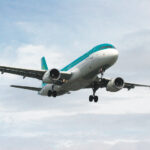North Runway project at Dublin Airport set for take off
Dublin People 08 Apr 2016
PLANS to develop a major new runway at Dublin Airport are back on track, the daa has confirmed.
The 3,110 metre runway will be built 1.6km north of the existing main runway and is expected to be delivered in 2020. Dublin Airport is investing in the region of €320 million in this multi-faceted project which will comprise multiple contracts and packages of works.
Dublin Airport received planning permission in August 2007 to build a new runway, but the plans were put on hold due to the economic downturn and subsequent fall in passenger numbers.
However, the recovery in passenger numbers, particularly in the past two years, has been significant. The daa says the continuation of growth at the country’s main airport is dependent on having sufficient capacity available to satisfy future demand.
“Last year was the busiest year ever in the airport’s history with a record 25 million passengers travelling in 2015,” said daa chief executive Kevin Toland. “Passenger numbers continue to grow strongly in 2016 with double digit growth recorded in the first two months of this year.”
He added: “We are progressing our plans to deliver the new runway in accordance with the development and pathway for growth outlined in the Government’s National Aviation Policy (NAP). Dublin Airport’s North Runway will significantly improve Ireland’s connectivity, supporting trade, foreign direct investment and tourism.”
The rapid recovery in passenger numbers is due to a combination of almost 50 new routes and services in the past two years, significant additional capacity increases on a number of existing routes, and nine new airlines operating at Dublin Airport. Total long-haul connectivity has grown by more than 65 per cent since T2 opened, while short-haul connectivity has increased by 16 per cent.
“Driven by demand from airlines and passengers, Dublin Airport’s current runway infrastructure is at capacity during the peak hours and this must be addressed to enable future growth,” Mr Toland stated. “The North Runway will significantly improve Ireland’s connectivity which plays a critical role in growing passenger numbers and sustaining the future economic development of Ireland.”
The daa believes that the North Runway development has the potential to open up connectivity to a range of long-haul destinations, particularly in fast growing economies in Asia, Africa and South America. It claims the delivery of a new runway could support a further 31,000 new jobs over the next two decades, contributing €2.2 billion to GDP.
The current planning permission, which would have expired in the summer of 2017, was granted with 31 conditions attached. The daa has previously expressed concern that two of these conditions are “onerous” and would severely reduce the future operational capacity of the airport at key periods.
“This has implications on our ability to support future traffic growth at the airport and we are looking at how this can be addressed,” said Mr Toland. “We are very conscious of balancing the national and business needs with those of our local communities and we will continue to work closely with our neighbours in relation to this project.”
The North Runway has featured in successive Local Area and County Development Plans since the 1970s. As a result of years of careful planning, land for this development was safeguarded over 40 years ago, so the runway will be delivered within the airport’s existing land bank.
Enabling works are due to commence later this year with construction of the North Runway scheduled to start in 2017. The project will support in the region of 1,200 jobs during its development as well as generating significant employment opportunities in the local supply chain for construction materials.
The development of the new runway will further enhance Dublin Airport’s economic impact which currently supports or facilitates a total of 97,400 jobs in the Irish economy. A major study conducted last year by economic consultants InterVISTAS found that Dublin Airport contributes €6.9 billion to the national economy.
However, confirmation that the runway is now proceeding is likely to lead to fresh concerns in local communities affected by the development.
Fine Gael TD for Dublin Fingal, Alan Farrell, insisted that Dublin Airport must firmly adhere to all conditions attached to its planning permission for a new runway.
“It is of the utmost importance that the concerns of local residents are prioritised should the daa continue its plans to develop a second runway at Dublin Airport,” Deputy Farrell said. “While the runway will allow Dublin Airport to continue to grow in terms of passenger numbers, measures must be taken in line with the conditions attached to the planning permission to offset any adverse effects a new runway may have on local residents.
“Planning permission for this new runway was granted in 2007 with 31 conditions attached. Two of these conditions in particular have faced much opposition from the daa. However, I would argue that these conditions are fundamental in terms of limiting the impact that a new runway would have on residents in our local community, particularly in Portmarnock, Kinsealy and St Margaret’s.
“These two particular conditions include limiting the number of flights allowed to land and take off from Dublin between 11pm and 7am, while also ensuring that the second runway is not used for take offs or landings at all during these hours.
“I believe these conditions to be entirely fair in terms of ensuring that nobody who lives in the vicinity of the airport will face any further disruption during the night.”
Deputy Farrell added: “I would urge the daa, as they progress these plans, to engage fully with local residents at every stage of the process, and to ensure that further noise limiting measures are implemented and enforced fully.”












